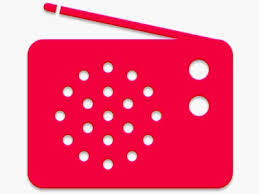 Without question the biggest and most anticipated product launch of the year in streaming audio, iTunes Radio was late to the party. But for that reason among others, its appearance signified a few important pivot points.
Without question the biggest and most anticipated product launch of the year in streaming audio, iTunes Radio was late to the party. But for that reason among others, its appearance signified a few important pivot points.
The must-have of streaming music
The online music service business was built by startups. Rhapsody, eMusic, AccuRadio, and others were at the forefront in the late 1990s and early 200s. Enabling platforms like ShoutCast and Live 365 enabled hyper-niche hobbyists to put streaming programming onto the web. Pandora began as a data-crunching startup which analyzed music attributes and slowly built the Music Genome Project, eventually turning the project in a public-facing direction with Pandora Radio in 2005. Spotify didn’t start until 2008, and entered the American market only in 2011.
That last date is important because it was Spotify’s particular feature set — not least ad-supported free listening — that caught the interest of U.S. consumers and began a meaningful migration from downloading to streaming. That migration posed an approaching crisis to Apple, which owned (and still does) the world’s biggest music retail store. It’s important to keep in mind the larger context in which Apple operates. The company is not primarily a music retailer, or a music company. It is a hardware inventor and vendor. To support that monumental core business, Apple builds an airtight ecosystem of connected services. It’s primary business motivation is to keep its users locked into that network. Any service holes which develop are leakage points
The development of iTunes Radio was a clear signal that Apple regarded streaming music a must-have feature of any competitive service ecosystem. Google and Microsoft had already plugged their streaming-music leakage points (with Google All Access and Xbox Music, respectively). Apple built up more anticipation during a three-month build-up than existed for the other two combined — partly because Apple is masterful a leveraging its product connections (iTunes Radio was introduced as part of a massive mobile operating system upgrade to iOS 7), and partly because of its gigantic past influence on the music industry.
The Apple vs. Pandora framework
After the launch of iTunes Radio on September 18, media observers instantly assigned “Pandora-killer” labels and scrutinized each audience metric released by either company. Wild assumptions and fuzzy math ensued, and the competitive framing will probably continue well into 2014 — at least until new Goliaths step into the space.
The winner-takes-all mentality reflects hit culture of pop music, and also speaks to the immaturity of the streaming business. Both services can count millions of users, but there is a general perception that the streaming market lacks sufficient heft to support two (or more) winners.
If anything, a sober observation of iTunes Radio influence might conclude that the product has been less tide-turning than expected. If Apple releases metrics in the new year, the picture will sharpen. But despite greater anticipation than for Spotify’s U.S. launch, there is perceptibly less buzz and visible social sharing of the iTunes Radio experience. Apple might have accomplished its task of satisfying existing loyalists, but it has not (yet) sparked another music revolution.
